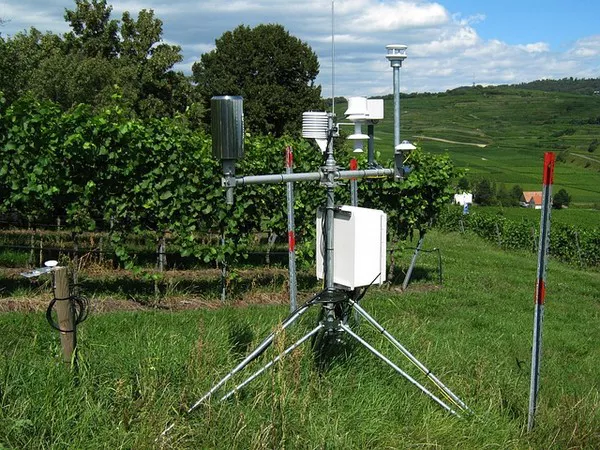In the realm of environmental monitoring, HVAC systems, and aerodynamics, accurate measurement of airflow is crucial. This measurement is often achieved using devices known as anemometers. These instruments are essential in various applications, from assessing indoor air quality to optimizing the performance of ventilation systems. Among the myriad types of anemometers available, two prominent types stand out for their reliability and precision: the hot-wire anemometer and the vane anemometer. This article delves into the working principles, applications, and advantages of these two anemometer types, providing a comprehensive overview for professionals and enthusiasts alike.
Hot-Wire Anemometer: Precision Through Thermal Measurement
Principle of Operation
The hot-wire anemometer operates on the principle of thermal conductivity. This type of anemometer uses a thin wire, usually made of platinum or tungsten, which is heated electrically. As the air flows past the wire, it cools down, causing a change in the wire’s electrical resistance. This change in resistance is directly proportional to the velocity of the airflow.
Components and Design
The hot-wire anemometer typically consists of a heating element (the wire), a temperature sensor, and an electronic control unit. The wire is suspended in the airflow, and the temperature sensor monitors its temperature. The control unit processes the data from the sensor to calculate the airflow velocity.
Applications
High-Precision Measurements: Hot-wire anemometers are known for their exceptional precision and are often used in research environments where detailed airflow data is required. They are particularly useful in wind tunnels and aerodynamic testing, where accurate measurements are critical for analyzing the effects of air movement on various objects.
Microenvironmental Studies: These anemometers are valuable in studying small-scale airflows in controlled environments, such as laboratories or clean rooms. They can measure very low velocities with high accuracy, making them ideal for applications where precision is more critical than the measurement range.
Thermal Boundary Layer Studies: In applications involving heat transfer and thermal boundary layers, hot-wire anemometers provide detailed information about the velocity distribution of the airflow, which is crucial for understanding thermal behavior.
Advantages
High Sensitivity and Accuracy: The primary advantage of hot-wire anemometers is their ability to measure very low velocities with high accuracy. They are capable of detecting subtle changes in airflow, which is essential for detailed scientific studies.
Rapid Response Time: Due to their design, hot-wire anemometers have a fast response time, allowing for real-time measurements and dynamic assessments of airflow.
Limitations
Susceptibility to Contamination: The wire can be prone to contamination or damage if exposed to particulate matter or aggressive environments, which can affect accuracy and performance.
Complex Calibration: Calibration of hot-wire anemometers can be complex and requires careful maintenance to ensure consistent accuracy over time.
Vane Anemometer: Practical Measurement for a Wide Range of Applications
Principle of Operation
The vane anemometer, also known as a propeller anemometer, operates on the principle of mechanical rotation. It features a set of blades or vanes that are positioned in the airflow. As the air moves, it causes the vanes to spin. The rotational speed of the vanes is directly proportional to the airflow velocity. A sensor or encoder measures the rotation speed, which is then converted into an airflow velocity reading.
Components and Design
A typical vane anemometer consists of the following components:
- Blades or Vanes: These are the moving parts that interact with the airflow. They are designed to capture the airflow and convert it into rotational motion.
- Rotational Sensor: This sensor measures the speed at which the vanes are spinning.
- Display Unit: This provides the output reading of the airflow velocity.
Applications
HVAC Systems: Vane anemometers are commonly used in HVAC systems for balancing airflow and ensuring efficient operation. They help in measuring the airflow in ducts and vents to ensure proper ventilation and comfort.
Industrial Settings: In various industrial applications, vane anemometers are employed to monitor and control airflow in processes such as drying, cooling, and ventilation.
Building Inspections: For building inspectors and facilities management professionals, vane anemometers are valuable tools for assessing air distribution and ensuring compliance with indoor air quality standards.
Advantages
Ease of Use: Vane anemometers are relatively simple to use and require minimal setup. They are user-friendly, making them suitable for routine measurements and inspections.
Durability: These anemometers are generally robust and can withstand harsh environmental conditions, making them ideal for industrial and outdoor applications.
Limitations
Lower Accuracy Compared to Hot-Wire Anemometers: While vane anemometers provide reliable measurements, they may not offer the same level of precision as hot-wire anemometers, especially in low-velocity or highly turbulent airflow conditions.
Size Limitations: The size of the vanes can limit the sensitivity of the measurements, particularly in very low airflow scenarios.
Comparative Analysis
When choosing between a hot-wire anemometer and a vane anemometer, several factors should be considered:
Measurement Precision: Hot-wire anemometers excel in precision and are preferred for detailed scientific research and applications requiring high accuracy. Vane anemometers are better suited for general measurements and practical applications where high precision is less critical.
Application Environment: Hot-wire anemometers are ideal for controlled environments and laboratory settings, whereas vane anemometers are more versatile and can be used in various industrial and outdoor environments.
Ease of Use and Maintenance: Vane anemometers are generally easier to use and maintain compared to hot-wire anemometers, which require careful calibration and handling to ensure accuracy.
See Also The History of the Anemometer
Conclusion
Both hot-wire and vane anemometers play crucial roles in airflow testing and measurement. The hot-wire anemometer stands out for its exceptional accuracy and rapid response time, making it ideal for high-precision applications. On the other hand, the vane anemometer offers practicality and robustness, catering to a broad range of industrial and field applications. Understanding the strengths and limitations of each type helps in selecting the right anemometer for specific needs, ensuring accurate and reliable airflow measurements in various contexts. Whether for scientific research, industrial monitoring, or routine inspections, the appropriate choice of anemometer can significantly impact the effectiveness of airflow testing and overall system performance.

